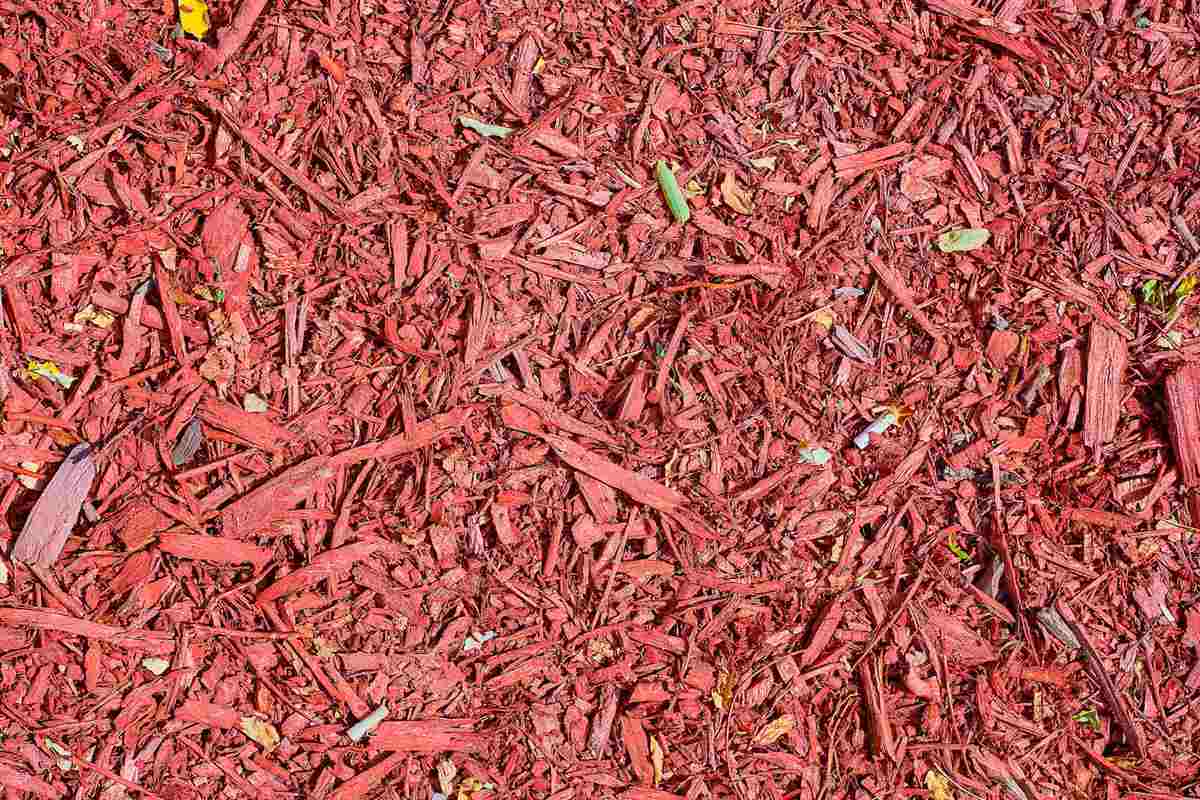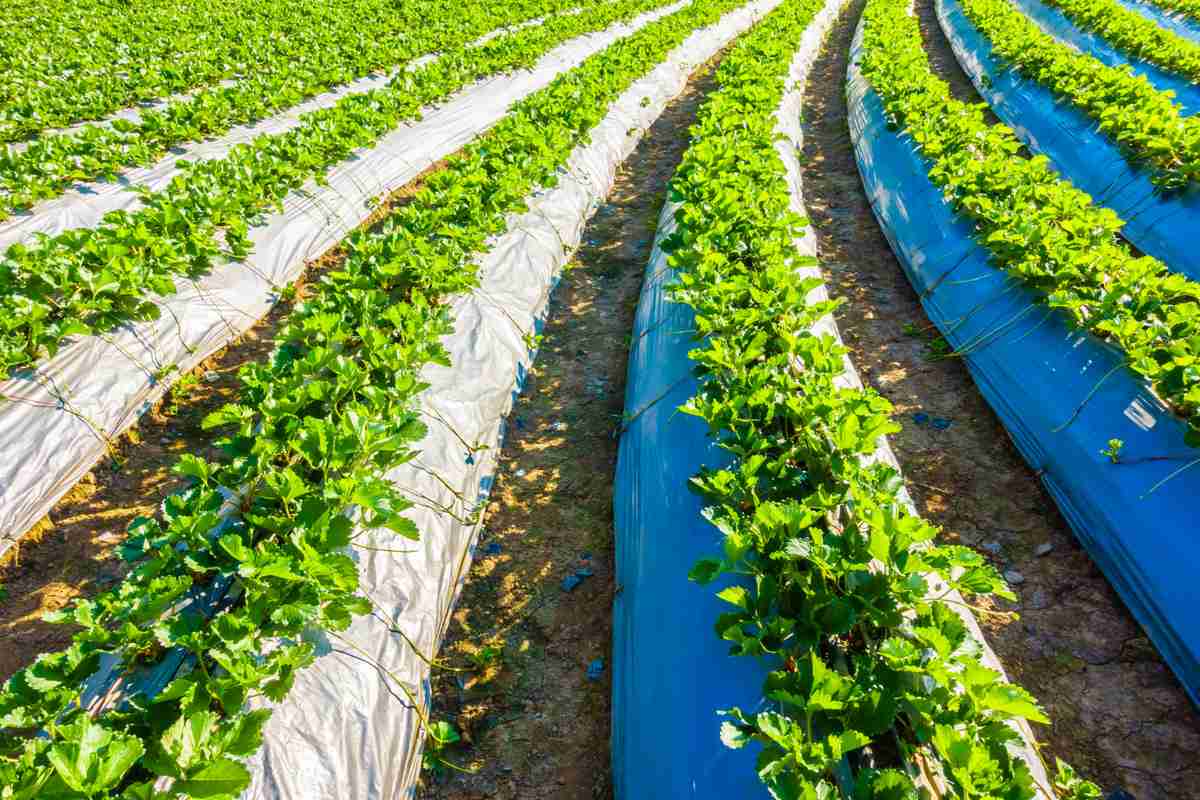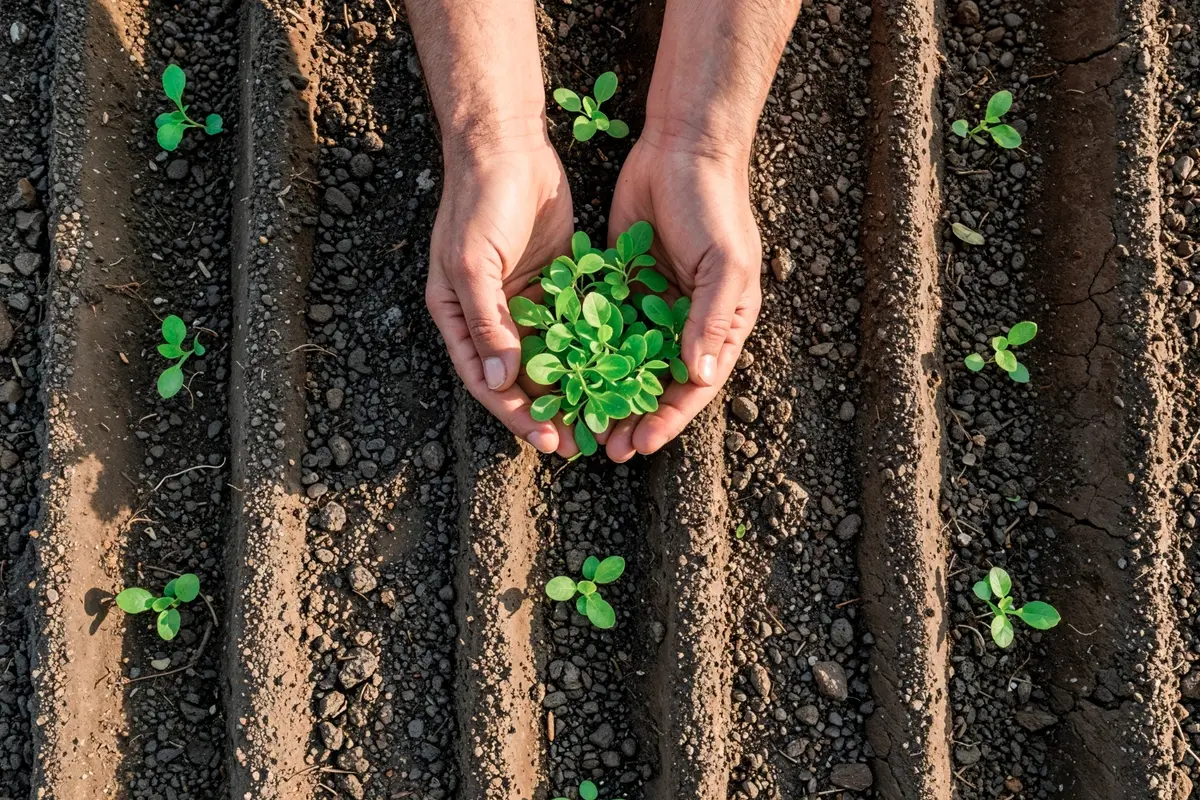Mulching plays a crucial role in gardening and farming by offering a range of benefits that contribute to the health and productivity of plants and the overall well-being of the agricultural ecosystem. This agricultural technique is widely used worldwide across various crops to create a favorable environment for plant growth, conserve water, and enhance overall productivity sustainably.
Table of Contents
Mulching in Agriculture
Mulching in agriculture is a practice that involves applying a protective layer over the soil surface around plants. This protective layer is known as mulch, which can be organic or inorganic. It helps retain soil moisture by reducing evaporation, suppresses weed growth, regulates soil temperature, and prevents soil erosion. Also, organic mulch contributes to soil health by adding organic matter as it breaks down, improving soil fertility and structure.
Benefits of Mulching in Agriculture

Mulching in agriculture provides numerous benefits that contribute to crops’ overall health and productivity. Here are some key benefits:
Moisture Retention: Mulch acts as a protective barrier, reducing water evaporation from the soil. This helps maintain consistent soil moisture levels, especially in arid or hot climates.
Weed Suppression: Mulch creates a physical barrier that inhibits the growth of weeds by blocking sunlight and impeding weed germination. This reduces competition for nutrients and water.
Soil Temperature Regulation: Mulch insulates the soil, helping to regulate temperature extremes. In hot weather, it prevents the soil from overheating; in cold weather, it provides some insulation, protecting plant roots.
Nutrient Enrichment: Organic mulches, such as cocopeat or bark, gradually decompose, adding organic matter to the soil. This decomposition process enhances soil fertility and structure, promoting a healthier plant environment.
Erosion Prevention: Mulch helps prevent soil erosion by reducing the impact of rainfall on the soil surface. This is particularly important in sloped terrain or areas prone to heavy rainfall.
Disease Prevention: By creating a barrier between soil and plant foliage, mulch can reduce the likelihood of soil-borne diseases splashing onto plants during rain or irrigation.
Improved Aesthetic Appeal: Mulching contributes to the overall aesthetic of a garden by providing a neat and uniform appearance. It can enhance the visual appeal of flower beds, garden paths, and around trees.
Enhanced Soil Structure: Organic mulches break down over time, improving soil structure by encouraging the development of beneficial microorganisms. This, in turn, creates a more hospitable environment for plant roots.
Regulation of Soil pH: Some mulches, such as pine needles or bark, can regulate soil pH, especially in areas where acidic conditions are desirable.
Protection from Compaction: Mulch helps reduce soil compaction by acting as a cushion, particularly in high-traffic areas. This is important for maintaining aeration and root health.
During mulching, you have to consider the type of mulch (organic or inorganic), the specific needs of the plants, and the local climate. Proper mulching practices contribute significantly to the overall success of gardening and farming operations.
Types of Mulching in Agriculture

Mulching in agriculture can be categorized into two main types, organic mulching and inorganic mulching. Each type offers unique benefits and is chosen based on specific crop needs and environmental conditions.
1. Organic Mulching
Straw Mulch: Straw is a common organic mulch that provides excellent moisture retention, weed suppression, and soil insulation. It’s particularly suitable for vegetable crops.
Hay or Grass Mulch: Similar to straw, hay or grass clippings can be used as mulch. They break down over time, adding organic matter to the soil.
Wood Chips or Bark Mulch: These materials are popular for ornamental plants and fruit trees. They decompose slowly, enhancing soil structure and also providing a clean and attractive appearance.
Cocopeat: As a mulching material, cocopeat can be a good choice to use around the base of plants. It helps to retain soil moisture content, reduces weed growth, and also maintains soil temperature.
Compost: Compost serves as both a soil conditioner and mulch. It enriches the soil with nutrients and improves its water-holding capacity.
Leaves: Fallen leaves, when shredded, make an excellent mulch. They decompose relatively quickly, adding organic material to the soil.
2. Inorganic Mulching
Plastic Mulch: Plastic films are widely used in agriculture for weed control, moisture retention, and soil warming. They come in various colors to regulate soil temperature.
Landscape Fabric: Fabric or woven mats made of synthetic materials are used for weed suppression. They allow water penetration while blocking sunlight to inhibit weed growth.
Gravel or Stones: Inorganic materials like gravel or stones are used for decorative mulching, particularly in arid regions. They don’t decompose and provide a long-lasting solution for weed control.
Geo-textiles: These are permeable fabrics that allow water and air to pass through. They are effective in erosion control and weed suppression.
Rubber Mulch: Made from recycled tires, rubber mulch is a long-lasting option that provides weed control and helps retain soil moisture. It’s often used in landscaping.
The choice between organic and inorganic mulch depends on factors such as the specific crop, climate, and the desired benefits. Both types play essential roles in sustainable agriculture by improving soil health, conserving water, and promoting optimal crop growth.
FAQs
Is mulching always good?
While mulching offers numerous benefits in agriculture, it may not always be universally advantageous in certain situations. Over-mulching or using the wrong type of mulch can lead to some drawbacks as well. Excessive mulch can create a habitat for pests and rodents, trap excess moisture, and cause root rot. Inappropriately applied mulch may also interfere with water penetration, affecting the soil’s ability to absorb rainfall. Therefore while mulching you have to think about various factors, such as the specific crop, climate, and the desired benefits.
Does mulching increase yield?
Yes, mulching is known to increase yield in agriculture. Mulch provides several benefits that contribute to enhanced crop productivity. It helps conserve soil moisture by reducing evaporation, ensuring plants have a consistent water supply. Additionally, mulch suppresses weed growth, minimizing competition for nutrients and water. The insulating properties of mulch regulate soil temperature, creating favorable conditions for plant roots. Also, organic mulches, as they decompose, contribute valuable organic matter to the soil, improving fertility.
Which color of plastic mulch is best?
The choice of the best color for plastic mulch in agriculture depends on the specific goals of the crop and the environmental conditions. Black plastic mulch is commonly used to increase soil temperature, especially in cooler climates, promoting early-season planting and enhancing heat-loving crops’ growth. Red plastic mulch is known for stimulating fruiting and flowering in certain crops like tomatoes and strawberries, while silver or metallic-colored mulch reflects light upward, deterring aphids and whiteflies. White plastic mulch is favored in warmer climates as it reflects sunlight, keeping the soil cooler and preventing heat stress for plants. Ultimately, the best color of plastic mulch is determined by the unique needs of the crops being cultivated and the prevailing climate conditions in a particular region.







